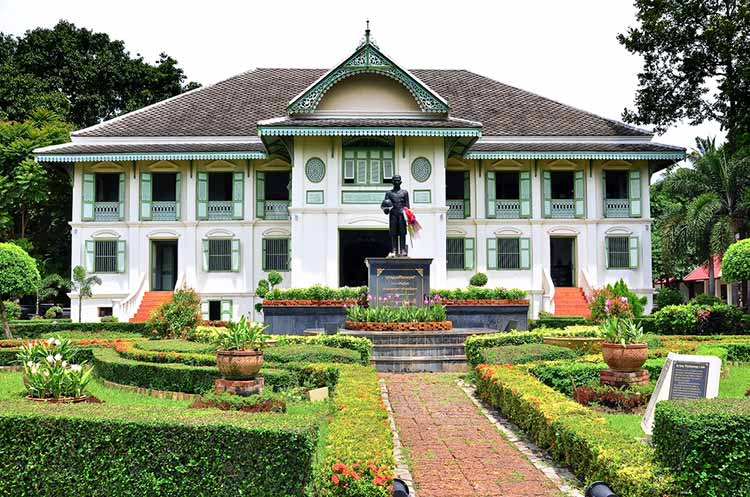Thailand’s Remarkable Teakwood Mansions: A Nostalgic Journey allows you to step into a world of exquisite craftsmanship and timeless beauty. As you explore the various tourist attractions and cities in Thailand, you cannot miss the awe-inspiring teakwood mansions that grace the landscape. These architectural marvels are a testament to Thailand’s rich cultural heritage and attention to detail. From intricate carvings to intricate detailing, the teakwood mansions immerse you in a nostalgic journey back to a bygone era. Soak up the charm and elegance of these historical gems as you indulge in delicious Thai food and relax on the beautiful beaches of Thailand.
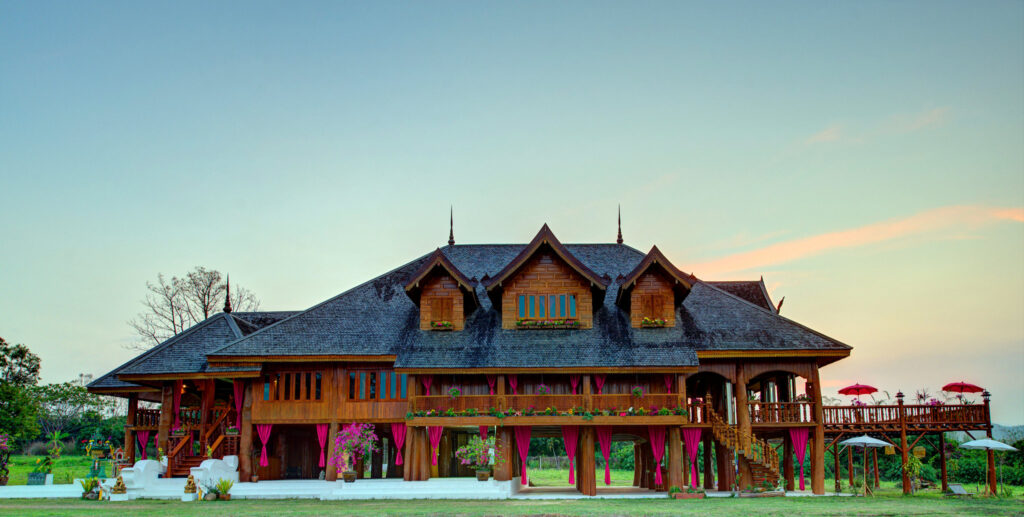
History of Teakwood Mansions in Thailand
Origin of teakwood mansions
Teakwood mansions have a long and rich history in Thailand, dating back to the ancient times. The craftsmanship and architectural expertise behind these magnificent structures have been passed down through generations, resulting in the creation of iconic landmarks that showcase the country’s cultural heritage. These mansions were primarily built during the 19th and early 20th centuries by wealthy aristocrats and royalty, who desired grand and opulent residences that reflected their status and power.
Popularity and significance
Teakwood mansions gained immense popularity during the colonial era when Thailand, then known as Siam, opened its doors to foreign trade and cultural exchange. The grandeur of these mansions, with their intricate carvings and elaborate details, captivated the imagination of visitors from around the world. These structures became symbols of luxury and refinement, not only for their architectural beauty but also for their historical and cultural significance.
Preservation efforts
Over the years, the preservation of teakwood mansions has become a priority for Thailand, recognizing their importance in preserving its cultural legacy. Efforts have been made to restore and maintain these historic buildings, ensuring that future generations can appreciate their beauty and significance. Various organizations, both public and private, have worked tirelessly to preserve these mansions, safeguarding the unique architectural style and traditional craftsmanship that define them.
Architectural Features of Teakwood Mansions
Traditional Thai architectural style
Teakwood mansions are renowned for their traditional Thai architectural style. Influenced by ancient Buddhist temple designs, these structures feature sweeping roofs, ornate gables, and intricate timber carvings. The use of elegant symmetry and harmonious proportions create a sense of balance and tranquility within the space. The architectural style reflects Thailand’s deep respect for nature and the belief in harmonizing the built environment with the surrounding landscape.
Influence of other Southeast Asian cultures
While Thai architecture serves as the foundation, teakwood mansions also draw inspiration from other Southeast Asian cultures. Influences from neighboring countries such as Myanmar, Cambodia, and Laos can be seen in the intricate wood carvings and decorative elements. These cross-cultural influences showcase the region’s shared history and the rich cultural exchange that has shaped Thailand’s architectural heritage.
Elaborate carvings and details
One of the defining features of teakwood mansions is the intricate carvings and elaborate details that adorn their exteriors and interiors. Skilled craftsmen meticulously carve intricate patterns, floral motifs, and mythical creatures onto the teakwood surfaces, showcasing remarkable craftsmanship and attention to detail. These carvings not only serve as decorative elements but also carry symbolic meanings and narratives that are deeply rooted in Thai culture and mythology.
Teakwood as the primary construction material
As the name suggests, teakwood is the primary construction material used in these mansions. Known for its durability and resilience, teakwood is highly sought after for its natural beauty and ability to withstand the test of time. The solid teak beams and panels used in the construction of these mansions showcase the craftsmanship that has been perfected over generations. The warm hues and fine grains of teakwood add to the overall aesthetic appeal of these architectural marvels.
Famous Teakwood Mansions in Thailand
Jim Thompson House
The Jim Thompson House, located in Bangkok, is one of the most famous teakwood mansions in Thailand. It was the home of Jim Thompson, an American entrepreneur who played a significant role in revitalizing the Thai silk industry. The house showcases a remarkable collection of traditional Thai artworks, sculptures, and antiques. Today, it operates as a museum, providing visitors with a glimpse into the life of Jim Thompson and the beauty of Thai architecture and craftsmanship.
Vimanmek Mansion
Situated in the Dusit Palace Complex in Bangkok, the Vimanmek Mansion is the world’s largest teakwood mansion. Built in the early 20th century as a royal residence, it served as the summer palace for King Rama V. The mansion is a stunning example of Thai architectural style, featuring intricate wood carvings, elegant interior design, and beautiful gardens. Visitors can explore the mansion’s many rooms, which have been preserved to depict the royal lifestyle of the era.
Baan Hollanda
Located in Ayutthaya, Baan Hollanda is a unique teakwood mansion that pays homage to the historical connection between Thailand and the Netherlands. It serves as a museum, showcasing the shared cultural heritage and historical ties between the two countries. The mansion features a blend of Thai and Dutch architectural styles, with intricate woodwork and exhibits that highlight the shared history and cultural exchange between Thailand and the Netherlands.
Suan Pakkad Palace
Nestled in the heart of Bangkok, Suan Pakkad Palace is a collection of traditional teakwood houses that have been converted into a museum. The houses showcase a vast collection of art, artifacts, and antiquities, including ancient ceramics, musical instruments, and religious items. The intricate architectural details and exquisite woodwork provide visitors with a fascinating insight into the rich cultural heritage of Thailand.
Maruekhathaiyawan Palace
Situated along the coast of Cha-Am in Phetchaburi Province, Maruekhathaiyawan Palace is a stunning teakwood mansion that was built as a summer retreat for King Rama VI. The palace spans a length of 2 kilometers along the beach, with interconnected teakwood buildings and a beautiful garden. The airy and open design of the mansion allows for the cool sea breeze to flow through, creating a serene and peaceful atmosphere.
The Legacy of Jim Thompson: The Silk King of Thailand
Background and achievements
Jim Thompson was an American architect, businessman, and art collector who played a pivotal role in revitalizing the Thai silk industry. Arriving in Thailand during World War II as part of the Office of Strategic Services, Thompson fell in love with the country and decided to make it his home. He started Jim Thompson Thai Silk Company, which quickly gained international recognition for its high-quality silk products. Thompson’s contributions to the silk industry and his efforts to promote Thai craftsmanship earned him the nickname “The Silk King of Thailand.”
Acquisition and restoration of teakwood mansions
While living in Thailand, Jim Thompson acquired several traditional teakwood houses that were in a state of disrepair. With his architectural background and passion for preserving the country’s heritage, he embarked on a mission to restore these mansions to their former glory. Thompson combined the various houses to create his own residence, the now-famous Jim Thompson House in Bangkok. Through meticulous restoration efforts, he was able to showcase the beauty of Thai architecture and craftsmanship to the world.
Influence on the preservation of Thai craftsmanship
Jim Thompson’s love for Thai art and culture extended beyond silk production and mansion restoration. He played an instrumental role in promoting Thai craftsmanship, not only through his business ventures but also by supporting local artisans and artists. Thompson understood the importance of preserving traditional techniques and skills that were in danger of being lost. His efforts helped revive interest in Thai craftsmanship and inspired a new generation of artists and craftsmen to continue the legacy of traditional Thai arts.
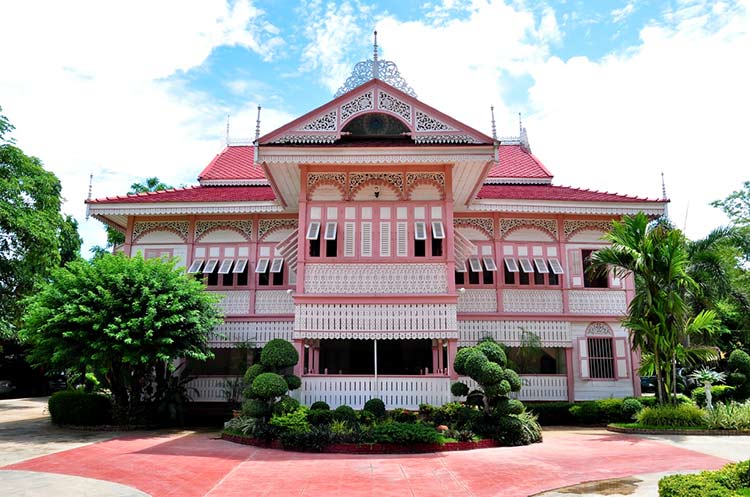
Exploring the Captivating Interiors
Teakwood furnishings and decor
The interiors of teakwood mansions are just as captivating as their exteriors. The use of teakwood for furnishings and decor creates a warm and inviting atmosphere, exuding a sense of elegance and luxury. Intricately carved teakwood furniture, such as beds, chairs, and tables, add to the overall aesthetic appeal of the space. Traditional Thai fabrics and textiles, combined with exquisite silk draperies and cushions, provide a touch of opulence and cultural richness.
Antique collections and artifacts
Teakwood mansions often house extensive collections of antiques and artifacts, offering a glimpse into the rich history and cultural heritage of Thailand. Ancient ceramics, religious sculptures, and intricate artworks adorn the halls and rooms of these mansions, creating an immersive experience for visitors. Each piece tells a story and contributes to the overall narrative of Thai culture, providing a deeper understanding of the country’s heritage.
Historical narratives and displays
Teakwood mansions serve as living museums, with each room and display showcasing different aspects of Thai history and culture. Visitors can learn about the traditions, customs, and even political history of Thailand through the carefully curated exhibits and narratives. Historical photographs, informative displays, and interactive elements offer a multi-dimensional experience, allowing visitors to engage with the rich history and cultural significance of these mansions.
Visiting Teakwood Mansions: Tourist Tips
Opening hours and admission fees
Before visiting teakwood mansions, it is essential to check their opening hours and admission fees. Some mansions may have different operating hours on certain days, so planning ahead is recommended. Admission fees may vary depending on the mansion and whether it is operated by the government or a private organization. It is advisable to have cash on hand, as some smaller establishments may not accept credit or debit cards.
Guided tours and audio guides
To fully appreciate the history and architectural significance of teakwood mansions, guided tours or audio guides are highly recommended. Experienced guides provide valuable insights and narratives that enhance the visitor’s understanding and enjoyment of the space. Audio guides, available in multiple languages, allow visitors to explore at their own pace while still receiving informative commentary and explanations.
Photography and restricted areas
While photography is generally allowed in teakwood mansions, it is important to respect any restrictions or guidelines set by the establishment. Some areas or exhibits may be off-limits for photography to protect delicate objects or preserve the overall experience for other visitors. It is always a good idea to ask the staff or inquire about any specific photography rules before starting the tour.
Respecting cultural norms and etiquette
When visiting teakwood mansions, it is important to respect Thai cultural norms and etiquette. Visitors should dress modestly, with knees and shoulders covered, as a sign of respect. Avoid touching or leaning against any artifacts or decorations, as they may be fragile or of historical significance. As with any cultural site, maintaining a respectful and quiet demeanor is appreciated to preserve the tranquil atmosphere and allow others to fully enjoy the experience.
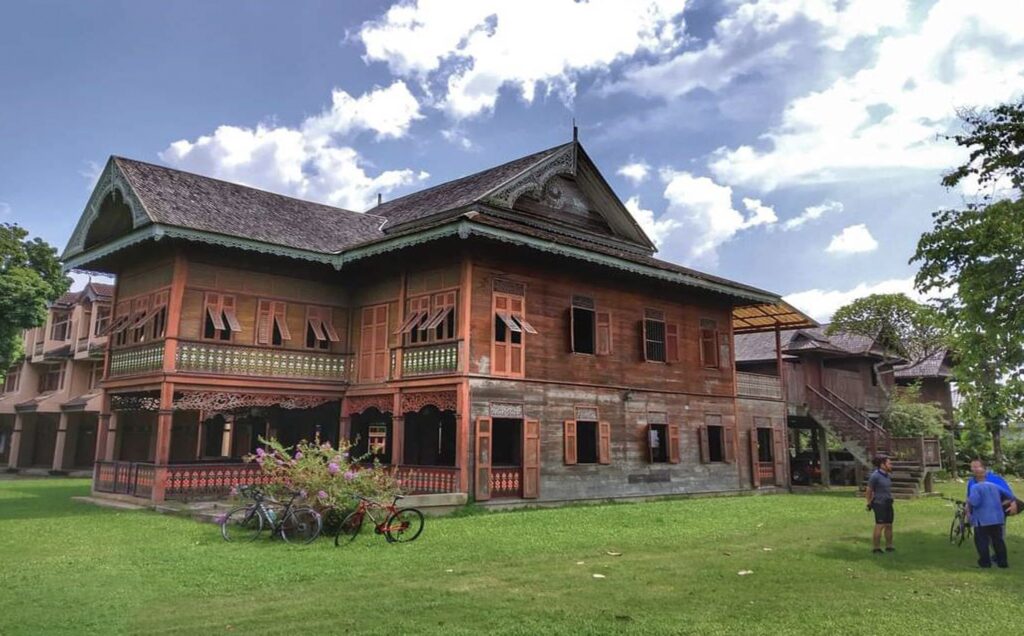
Unraveling the Mysteries: Thai Legends and Folklore
Supernatural tales associated with teakwood mansions
Thai legends and folklore often intertwine with the history of teakwood mansions, adding an air of mystery and intrigue. Stories of supernatural occurrences and ghostly sightings are often associated with these ancient structures, reflecting the spiritual beliefs ingrained in Thai culture. Whether it is the presence of benevolent spirits watching over the inhabitants or the stories of restless souls haunting the halls, these tales contribute to the allure and fascination surrounding teakwood mansions.
Ghost stories and haunted legends
Teakwood mansions have their fair share of ghost stories and haunted legends, passed down through generations. These stories often draw from various cultural and supernatural beliefs, such as the existence of phi, malevolent spirits that can inhabit certain spaces. Spirits of former inhabitants, tragic events, or unjust deeds are often believed to linger within the walls of these mansions, creating an aura of mystery and the occasional hair-raising experience for those who dare to explore.
Cultural beliefs and rituals
Thai cultural beliefs and rituals play a significant role in the legends and tales associated with teakwood mansions. Traditional practices, such as spirit houses and offering ceremonies, aim to appease spirits and foster harmony between the supernatural realm and the earthly domain. Understanding these cultural beliefs adds depth to the fascination with teakwood mansions, as they become more than just physical structures but also gateways into the realm of belief and mysticism.
Thailand’s Teakwood Mansions in Modern Times
Transformation into boutique hotels
In recent years, some teakwood mansions in Thailand have been transformed into boutique hotels, allowing visitors to experience the grandeur and charm of these historic structures firsthand. By converting these mansions into accommodation options, their unique architectural features and cultural heritage are preserved while also providing a comfortable and luxurious experience for guests. Staying in a teakwood mansion-turned-hotel offers a unique blend of history, culture, and modern amenities.
Adaptation for commercial purposes
Teakwood mansions have also been adapted for commercial purposes without losing their historical and cultural significance. Some mansions now house restaurants, art galleries, or shops, offering visitors the opportunity to immerse themselves in Thai culture while enjoying contemporary offerings. By blending tradition with modernity, these commercial adaptations ensure the preservation of teakwood mansions for future generations while also supporting local businesses and artisans.
Revival of traditional craftsmanship
The revival of interest in teakwood mansions has sparked a resurgence in traditional craftsmanship in Thailand. Skilled artisans are once again honing their craft, creating intricate wood carvings and exquisite furniture that pay homage to the architectural traditions of the past. The demand for handmade teakwood products and traditional building techniques has provided new opportunities for craftsmen, allowing them to showcase their skills and preserve the legacy of Thai craftsmanship.
Challenges in preserving historic structures
Preserving teakwood mansions is not without its challenges. The natural aging of teakwood, exposure to the elements, and the general wear and tear over the years require continuous maintenance and restoration efforts. Securing funding for the upkeep of these historic structures can be a constant struggle, as the costs of preservation can be substantial. Additionally, finding skilled craftsmen who possess the traditional knowledge and skills necessary for restoration work can be a challenge in an increasingly modernized world.
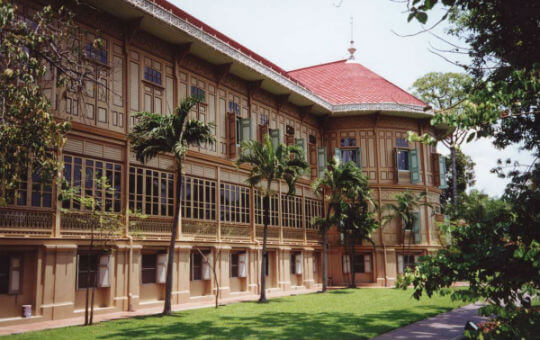
Teakwood Mansions as Cultural Heritage Sites
Recognition and UNESCO World Heritage
The cultural significance and architectural value of teakwood mansions have led to their recognition as important heritage sites in Thailand. Some of these mansions have been designated as national treasures, receiving protection and recognition from the government. There have also been efforts to nominate specific teakwood mansions for inclusion in the UNESCO World Heritage list, highlighting the global importance of these architectural wonders and their role in preserving Thailand’s cultural heritage.
Role in promoting Thai culture and identity
Teakwood mansions play a crucial role in promoting Thai culture and identity to both domestic and international audiences. They serve as tangible reminders of Thailand’s rich history and the unique architectural style that defines the country. By showcasing the craftsmanship and traditions of the past, these mansions become living embodiments of Thai culture, fostering a sense of pride and appreciation among the local community and visitors alike.
Preservation initiatives and collaborations
Preservation initiatives and collaborations between government agencies, private organizations, and local communities are vital in safeguarding the future of teakwood mansions. Financial support, technical expertise, and community involvement are crucial elements in ensuring the long-term preservation and sustainability of these historic structures. By working together, stakeholders can create comprehensive strategies that prioritize the preservation of teakwood mansions while also promoting the socioeconomic benefits they bring to the surrounding areas.
Exploring Beyond Teakwood Mansions: Other Thai Architectural Wonders
Grand Palace and Temple of the Emerald Buddha
The Grand Palace and the Temple of the Emerald Buddha in Bangkok are iconic architectural wonders that showcase the grandeur and intricate detailing of Thai craftsmanship. The Grand Palace complex houses numerous magnificent structures, including the revered Temple of the Emerald Buddha. Visitors can marvel at the intricate murals, golden spires, and glistening mosaics that adorn these architectural masterpieces.
Sukhothai Historical Park
Located in the ancient capital of Sukhothai, the Sukhothai Historical Park is a UNESCO World Heritage site that transports visitors back in time to the golden age of Thai civilization. The park is home to numerous ancient temples, stupas, and statues, showcasing the architectural and artistic prowess of the Sukhothai Kingdom. Exploring this vast historical park offers a glimpse into the rich heritage of Thailand’s early history.
Ayutthaya Historical Park
Ayutthaya Historical Park, another UNESCO World Heritage site, was once the capital of the Kingdom of Ayutthaya. The park is home to the remnants of the ancient city, including temples, palaces, and statues. These architectural wonders reflect the grandeur and cultural significance of the Ayutthaya Kingdom, providing visitors with a fascinating journey through history.
Chiang Mai Old City
Chiang Mai’s Old City is a treasure trove of architectural wonders, with its well-preserved city walls and moat dating back to the 13th century. The Old City is home to numerous temples, or wats, each showcasing unique architectural styles and artistic details. Exploring the narrow streets and alleyways of the Old City allows visitors to immerse themselves in the rich history and distinctive charm of northern Thailand.
In conclusion, Thailand’s remarkable teakwood mansions stand as testaments to the country’s rich cultural heritage and architectural prowess. These majestic structures, with their traditional Thai architectural style, intricate carvings, and primary use of teakwood, captivate visitors from around the world. Through preservation efforts and recognition as cultural heritage sites, these mansions continue to play a vital role in promoting Thai culture and identity. Beyond teakwood mansions, Thailand boasts other architectural wonders such as the Grand Palace, Sukhothai Historical Park, Ayutthaya Historical Park, and Chiang Mai Old City, all of which offer fascinating insights into the country’s history and cultural legacy. Exploring these architectural marvels provides a nostalgic journey through Thailand’s past, revealing the stories and traditions that continue to shape the country’s present and future.
